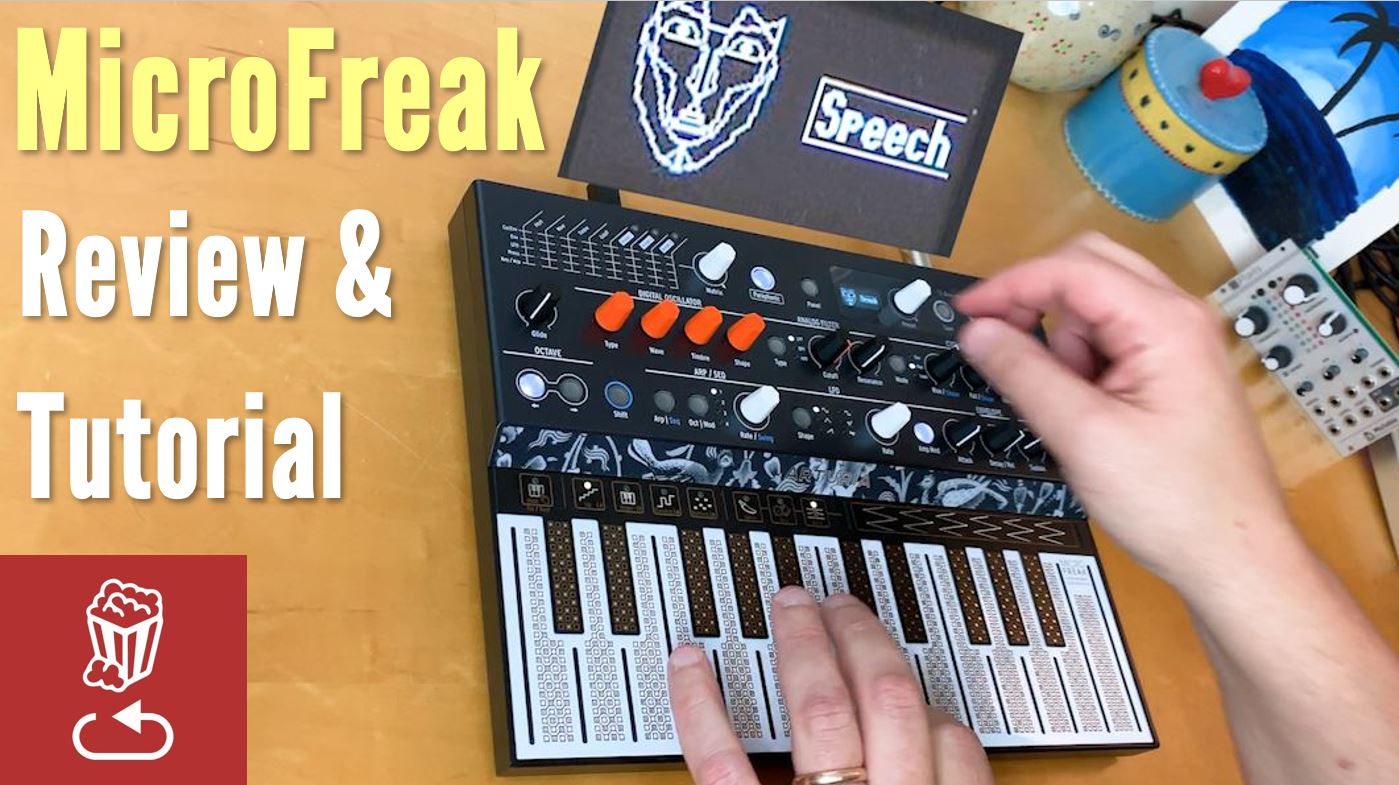If you’ve seen my Eurorack videos, Plaits from Mutable Instruments is in many of them. It’s a very flexible module with 16 different sound engines and three control knobs for each.
In MicroFreak, Arturia have taken 7 of the 16 engines from Plaits – they can do that because Mutable have generously made their code open source – added 5 of their own – and multiplied that: MicroFreak has four copies of the concept behind this module, wrapped in a full synth with an extensive mod matrix, analog SEM filter, rather innovative sequencer and arpeggiators and a touch surface controller. Probably the most amazing thing they’ve done is price the whole thing at around 300 euros or dollars, which is quite an interesting price point.
This video goes over all these components including each the synth engines in depth.
From a bird’s eye view, here are the main things that make MicroFreak special:
- Twelve sound engines, though digital, give it a broad range of sounds – some better than others. You can listen to all 160 factory presets here: https://youtu.be/FS3jburtVsQ. Despite having only one filter, having four copies of the sound engines and a dedicated VCA for each makes MicroFreak a truly polyphonic synth.
- Like the sound engines, the SEM filter is a matter of taste – I think it sounds really good, and quite different from the harsh Steiner-Parker filters used by Arturia up until now.
- The capacitive touch keyboard takes getting used to. While it does have the benefit of polyphonic aftertouch, I would have preferred a regular keyboard.
- The arpeggiator and sequencer are quite original with the excellent added generative “Spice and Dice” functionality.
- The mod matrix is easy to understand and follows the user experience of the MatrixBrute giving you an immediate overview of almost all the modulation going on in the synth.
So, what’s the bottom line?
I struggle to think of a synth that provides as many synthesis engines and sequencing value as MicroFreak at this price range. The large number of sound engine types, to have four of them, the SEM filter, the clearly laid out mod matrix, and the innovative sequencer and arpeggiator randomization functions – all that for $300 make this a synth that’s very hard to ignore.
